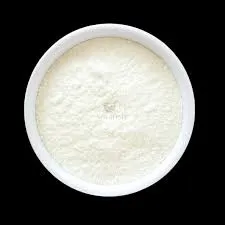
Nov . 27, 2024 09:31 Back to list
Hydroxypropyl Methylcellulose HPMC Powder Applications and Benefits in Various Industries
Hydroxypropyl Methylcellulose (HPMC) Powder An Overview
Hydroxypropyl Methylcellulose (HPMC) is a versatile, non-ionic cellulose ether that has gained popularity in various industries due to its unique properties. Functioning as a thickener, binder, film-former, and emulsifier, HPMC powder is widely used in pharmaceuticals, food, cosmetics, and construction materials. This article explores the characteristics, applications, and benefits of HPMC powder, highlighting its significance across multiple domains.
Chemical Structure and Properties
HPMC is derived from cellulose, a natural polymer obtained from plant cell walls. By treating cellulose with propylene oxide and methyl chloride, the chemical structure of HPMC is modified, resulting in varied degrees of hydroxypropyl and methyl substitutions. The resulting compound is soluble in water, forming a clear, viscous solution, and exhibits excellent controlled-release properties, which enhance its performance in various formulations.
One of the key attributes of HPMC powder is its ability to form gels when it comes into contact with water. This gel formation is critical for formulating products that require viscosity and stability. HPMC can also function under a wide range of pH conditions and temperatures, making it suitable for numerous applications. Additionally, being non-toxic and biodegradable, HPMC is considered safe for use in food and pharmaceutical products.
Applications in Pharmaceuticals
In the pharmaceutical industry, HPMC is extensively utilized as an excipient in drug formulations. It enhances the viscosity of liquid formulations and acts as a binder in tablet production, ensuring uniform distribution of active ingredients. HPMC is also used in controlled-release drug delivery systems, where its gel-forming ability helps to prolong the release of medication in the body over time. The use of HPMC in sustained-release formulations can improve patient compliance and therapeutic outcomes.
Moreover, HPMC is vital in the creation of ophthalmic preparations. Its moisturizing properties are beneficial in eye drops to reduce dryness and irritation, providing relief to patients suffering from ocular discomfort.
Culinary Uses
hydroxypropyl methylcellulose hpmc powder

In the food industry, HPMC is valued for its ability to improve texture and stability in various products. It is commonly used as a thickening agent in sauces, dressings, and ice creams, providing a creamy mouthfeel without adding additional calories. HPMC also plays a role in gluten-free baking, as it helps to mimic the elasticity and structure of gluten, resulting in improved texture in gluten-free bread and pastries.
Beyond its thickening capabilities, HPMC serves as an emulsifier, helping to stabilize oil-in-water emulsions. This property is particularly important in salad dressings and mayonnaise, where HPMC contributes to a uniform and appealing appearance. Additionally, its water-retaining properties can enhance the shelf-life of baked goods by keeping them moist.
Cosmetic and Personal Care Applications
HPMC is also a popular ingredient in cosmetics and personal care products. It functions as a thickener and stabilizer in creams, lotions, and gels, enhancing product texture and consistency. Its film-forming capabilities allow it to create a protective barrier on the skin, which can promote moisture retention. Furthermore, HPMC is widely used in hair care products, where it helps to improve manageability and provide a smooth, shiny finish.
Construction Industry Relevance
In the construction sector, HPMC is utilized in the formulation of cement-based materials. HPMC acts as a water-retaining agent, improving the workability of mortars, plasters, and tile adhesives. Its ability to enhance bonding and adhesion properties contributes to the performance and durability of construction materials, making HPMC an essential additive in modern building applications.
Conclusion
Hydroxypropyl Methylcellulose (HPMC) powder is an indispensable material with a wide array of applications spanning pharmaceuticals, food, cosmetics, and construction. Its unique properties, including thickening, binding, and film-forming capabilities, make it a critical ingredient in enhancing product performance and stability. As industries continue to evolve, HPMC's versatility and safety profile position it as a valuable component in innovative formulations and applications across the globe.
-
HPMC for Tile Adhesive: Superior Bonding & Workability
NewsAug.30,2025
-
Premium Cellulose Ether: Effective Liquid Thickener Solutions
NewsAug.29,2025
-
HPMC for Tile Adhesive: Enhanced Bonding & Workability
NewsAug.28,2025
-
tile-bonding-additives-for-stronger-bonds
NewsAug.22,2025
-
construction-grade-rdp-for-wholesale-needs
NewsAug.22,2025
-
trusted-hec-supplier
NewsAug.22,2025







